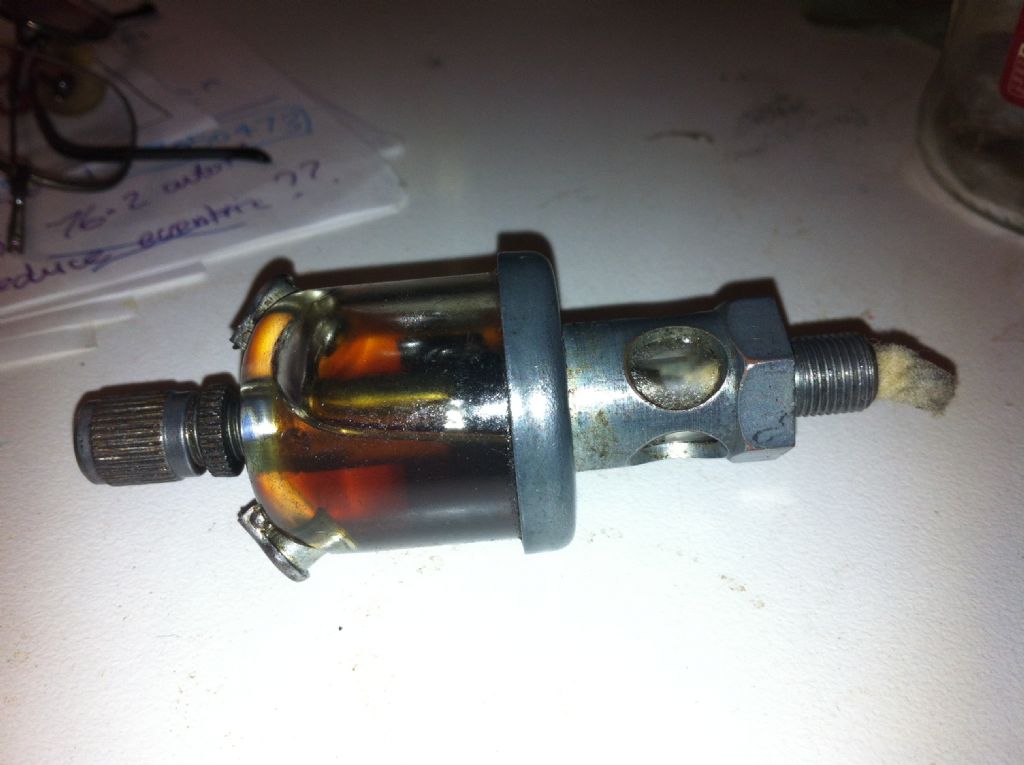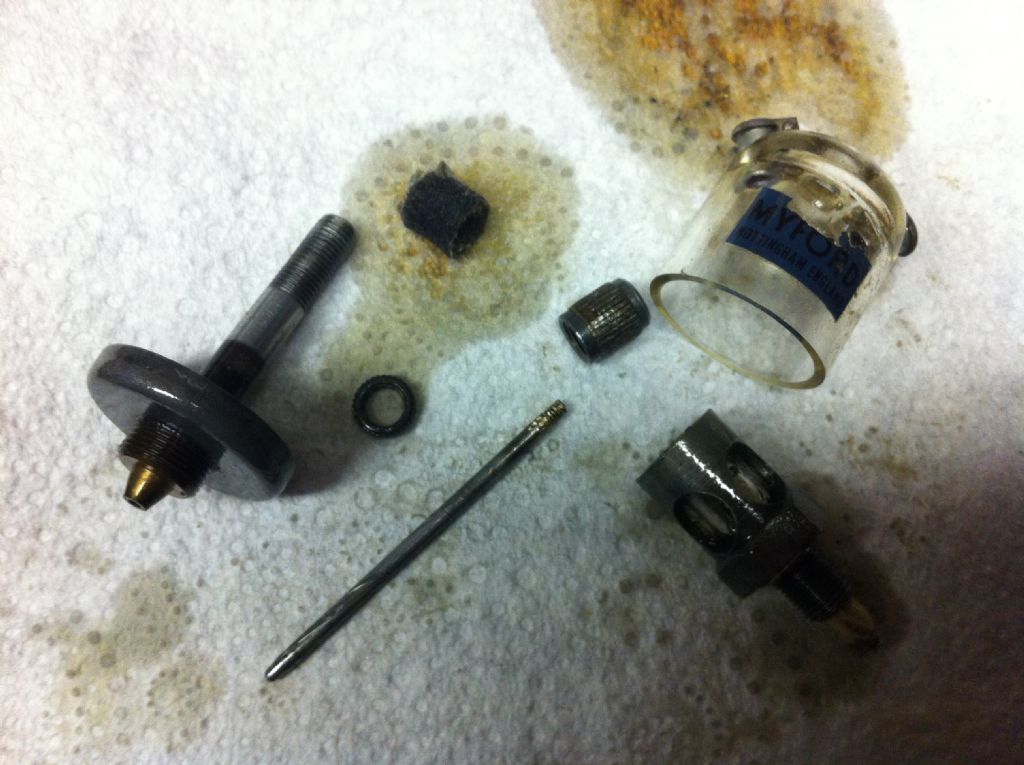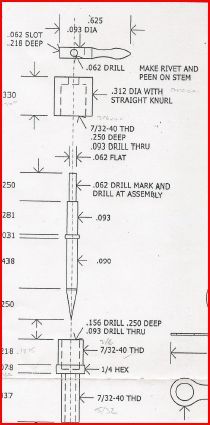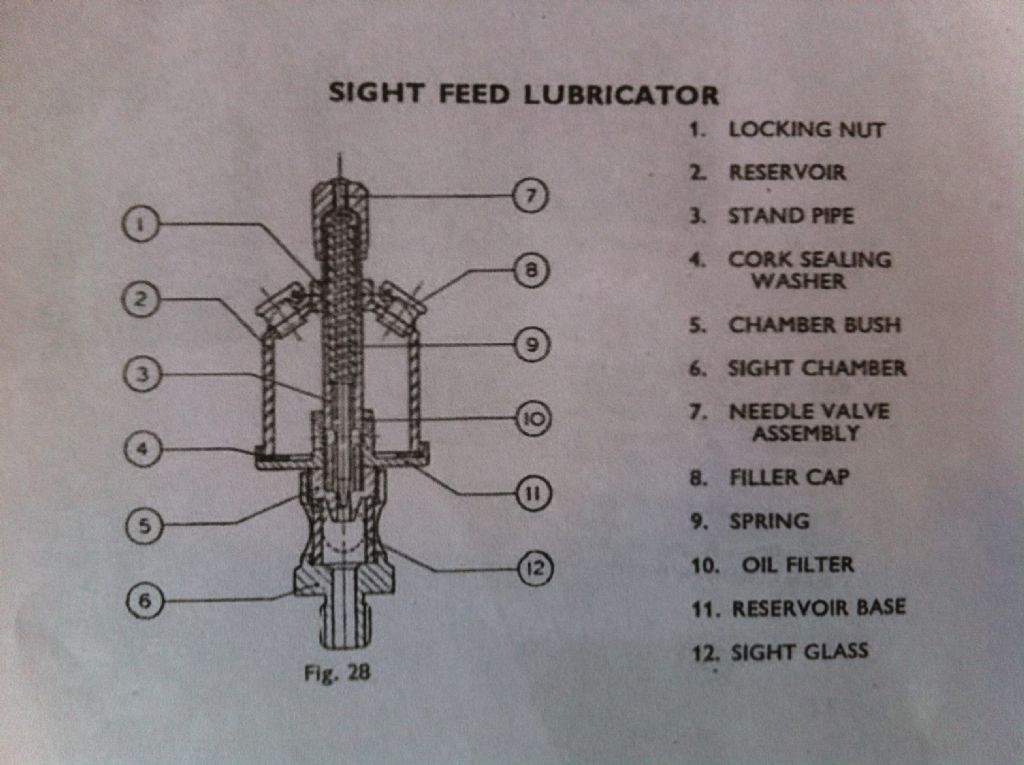Hi Simon,
What you have are the original Myford drip-feed oilers. No springs, just manual screw adjustment of the needle valve and a little felt filter to catch any foreign bodied in the oil and no wicks in the ones on my machine. The oil just drips straight into the bearings.
Here is my ML7 (1965 vintage) fitted with these oilers.

At the start of a session I undid the needle valve screw a couple of turns to get a good drip going and then turned it down to about 3/4 of a turn from closed, setting a regular drip which was visible through the little windows in the base of the oiler. I put an index mark on the top of the knurled knob to help gauge the position of the needle valve. At the end of a session, I gently closed the valves, otherwise, they emptied overnight.
One thing I did do was to seal the bowl to plastic cap joint with silicone sealant to stop them leaking, the original cork gasket was not effective. Overall they worked very well, and never thought of replacing them with the flip-top spring activated type.
Regards
Phil H
Edited By CotswoldsPhil on 11/06/2015 14:13:54
 Simon Collier.
Simon Collier.








